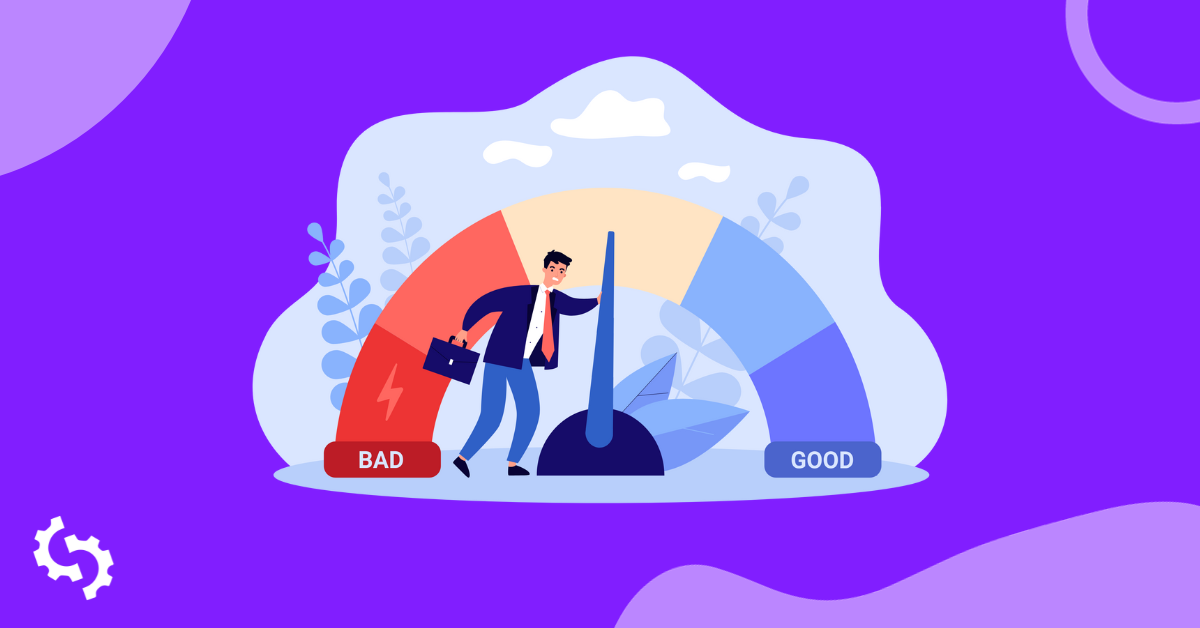
When was the last time you clicked beyond the comfort zone of Page One when searching for something on Google?
The chances are, you can't remember.
Page One is our safe place.
We rarely need to venture outside of it because we know the results shown here are uber-relevant to our search term.
But what sort of impact is that process having on your website?
You're listed in the unexplored depths of Page 20, despite plowing time and money into improving your presence in the SERPs.
Your ideal customers aren't anywhere to be found.
Why is every competitor speeding past, seemingly with ease?
There's one thing that could be pulling your entire website down: low-quality links.
No matter how great every other aspect of your SEO strategy is, if your backlink profile is riddled with bad links, then your rankings are going down.
Here's how to stop that from happening.
How to Find the Low-Quality Links Damaging Your Rankings
In order to begin finding (and extracting) these pesky low-quality links that are trashing your ranking attempts, you'll need to start with the one thing that's crucial for any and all link-related activity:
Your backlink profile.
This contains all the data on every backlink pointing to your site. It also includes the SEO metrics for each backlink, which you'll be using to find those low-quality links damaging your SEO reputation.
To find your backlink profile, head over to the SEOptimer dashboard and click on Backlink Research.
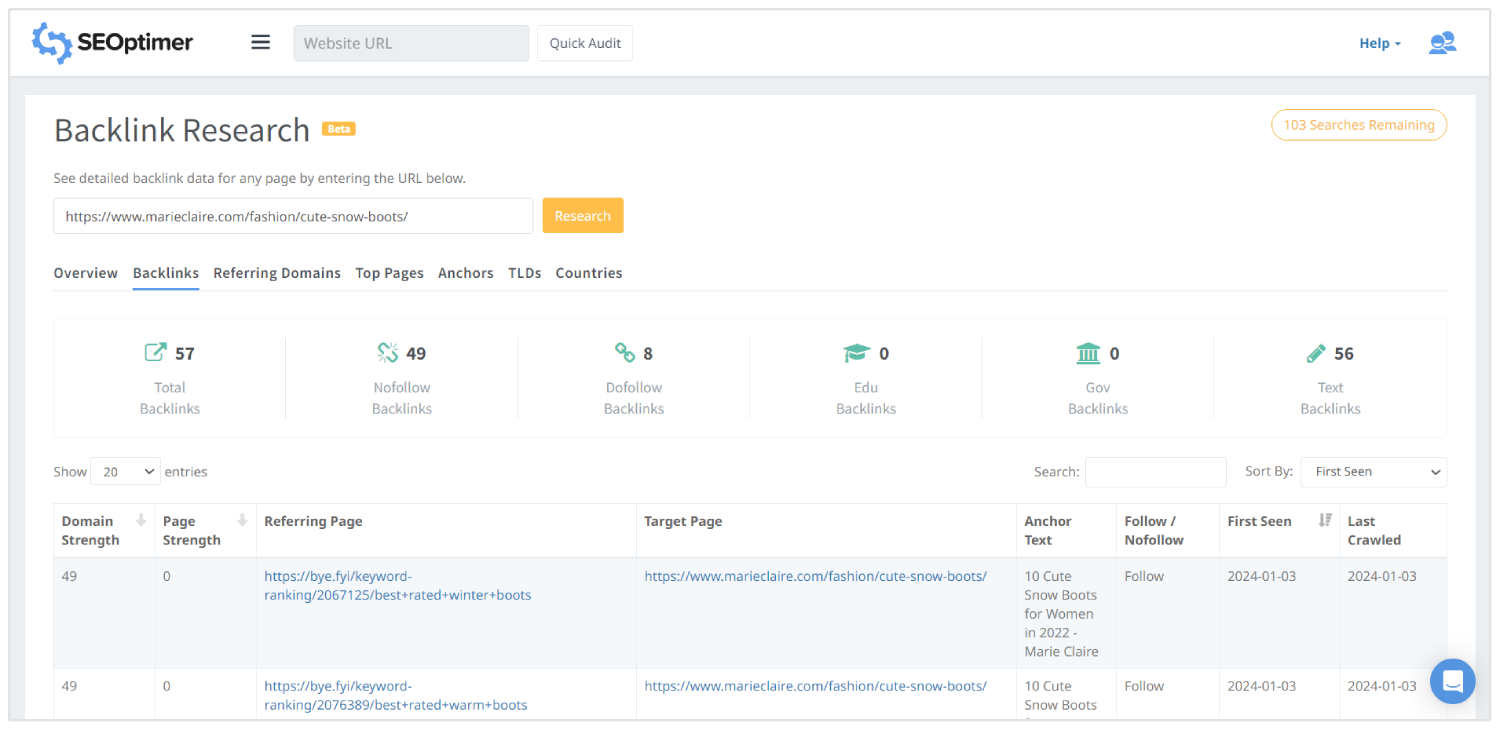
So, you've got your backlink profile.
The next step is to analyze the huge list of links in front of you, and suss out whether you should be worried about them.
Here are the things you need to look for:
1. Penalized Sites
The first no-go in the world of backlinks is one from a penalized site.
But, before we dive into spotting whether you've fallen victim to one, let's explain why they're the work of the devil (in terms of SEO).
Google regularly dishes out penalties to sites that practice black hat SEO. Actions like duplicate content, keyword stuffing or spammy link building could see a site be flagged by Google.
These flags can be placed automatically by the search engine's algorithm, or manually by one of Google's team.
But what that comes down to is this:
A penalty is a penalty, and shows that the site in question has done some dodgy tactics.
In an SEO world where reputation and authority is highly regarded in Google's algorithm, you wouldn't want to be collecting backlinks from these types of websites.
That's because you could be given a penalty by being associated with them (like guilt by association!). Especially if you've built a link from them and they've already been penalized.
To check if you've built a backlink from a site like this, start by doing a site search of the domain it's from.
You'll want to look for the number of indexed results, which shows how many pages are being ranked from that domain:
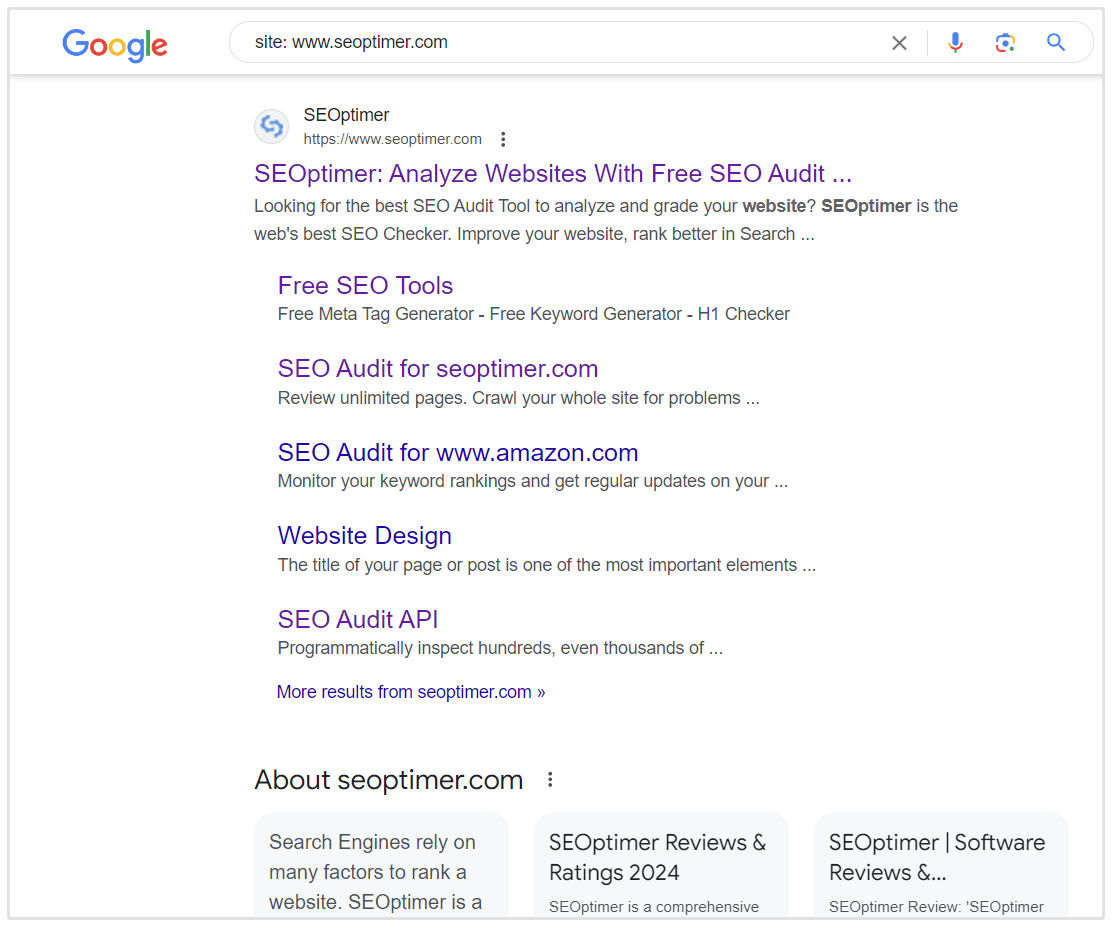
Failing to spot anything here? That means the site has been excluded from search results, and placed under some form of penalty by Google.
However, don't let out a sigh of relief just yet.
Minimal search results from a site search could also indicate that your linked-from site has been given a penalty.
In this case, do a sense check.
Can you find at least 50 pages on the website when you visit it through your browser, as normal? If so, and you can only find four in Google's search results, add it to your low-quality link list. There's definitely something fishy going on!
2. Low-Traffic Sites
Next up on your backlinks to be worried about is those which come from low-traffic sites.
You'll want to take a deep dive into these links because they might not be worthwhile to have.
Sites with zero or minimal traffic won't add much value to your site. Plus, your aim is to make every backlink valuable for a user. So, if there's nobody seeing your backlink—never mind clicking on it!—then it might be time to get rid of it.
Just a little warning with this step: It takes a bit more time, but it's definitely worth it... so, don't skip!
To find these sites, head back to your backlink profile. You'll need to click through and check every link that looks suspicious, from domains you don't recognize.
Then, plug the URL of your linked-from site into Alexa.
You should be looking at:
Site Traffic Graphs
This graph gives an indication of how the traffic to your linked-from site is changing.
For example, if I had a backlink from Amazon.co.uk and wanted to check their site traffic, I'd see this graph:
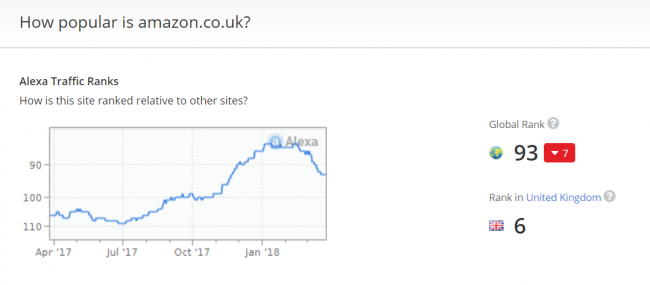
If you see a graph with an upward trend, you've got a good reason to believe that the site is just getting going. It's likely to become bigger, better and more authoritative in the future, so hold on to these ones—they're backlink gold.
However, if you spot a downward trend, try and figure out why.
Is one of their competitors overtaking them? Or have they been penalized?
Follow the steps in #1 to check if it's due to a penalty, and if you find that it is, you can go right ahead and add the site to your list of low-quality links.
Visitors by Country
You should also be using Alexa to discover where the majority of visitors to your linked-from site come from.
Remember, value is key in link building. That's why you should always be thinking in terms of your ideal customer.
You can see that for the SEOptimer site, the majority of site traffic comes from the U.S. This demographic is closely followed by India and the U.K:
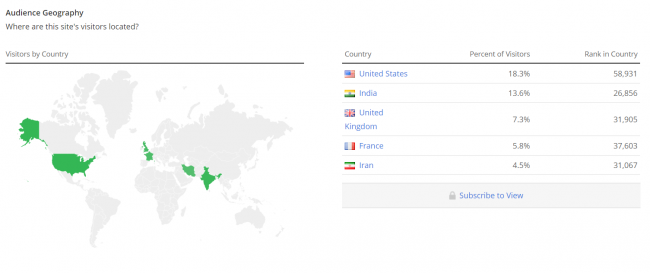
But does this mean it's a good backlink to get traffic from?
Again, it's not as clear-cut as you might think.
If your ideal customers were living in Asia, then probably not.
However, if you were targeting people in the U.S. with an interest in SEO, then it's a fantastic backlink to have.
Engagement Metrics
The final thing you'll need to use Alexa for is to determine the engagement rates of your linked-from site.
Engagement is a huge ranking factor in search engine algorithms. It proves that the site is sharing something of value. You know, that important thing I keep banging on about?
Here are the engagement metrics for our site:

We've got a low bounce rate and high time on site, which shows that people are staying on our site when they come to it.
When you add your backlink URL here, use these as your KPIs:
- Bounce rate: Less than 50% for blogs; less than 30% for general pages.
- Daily pageviews per visitor: No fewer than one.
- High time on site: 2+ minutes is great.
However, each of these site traffic statistics can be dependent on the age of the site—remember that newer websites won't have a ton of traffic.
So, combine this data with some good old common sense. If you find bad scores and evidence that the site's been active since 2004, it's probably wise to add them to your list of low-quality links.
3. Sites with Low Domain Authority
Thankfully for us, SEO pros have created metrics we can use to separate high and low-quality links.
One of those is Domain Strength, which scores a URL on its likeliness of ranking in the SERPs.
Scored out of a maximum of 100 points, you should be aiming for sites with a minimum DA of 40.
Why? Because like many other things in SEO, the best way to improve your own Domain Authority is to collect links from sites with a higher scoring than your own.
Let me explain.
If my website currently has a Domain Strength scoring of 26. It's not great, and indicates that I'm fairly unlikely to take the SERPs by storm:
My scoring is low because I don't have many links from high Domain Strength sites pointing to mine.
You can check the Domain Strength of your backlinks in a matter of minutes.
Simply head back to your backlink profile in SEOptimer, and organize the DA column from smallest to largest:
Now go down the list one by one.
For sites with a score of 15 or less, I'd recommend banishing them instantly—unless they're a brand new website and still waiting to be indexed.
However, for sites with a score between 16 and 35, use the other tactics I've shared in this article to determine whether it should be added to your list of low-quality links.
4. Pages with Low Page Authority
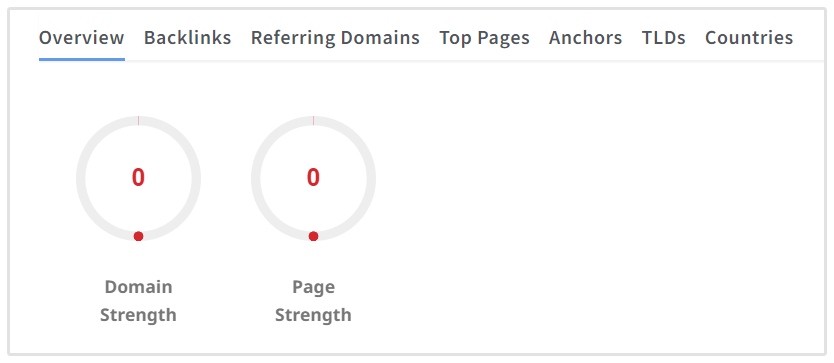
Another SEO metric you can use to determine the quality of a link is Page Strength. This is similar to Domain Strength but scores a single page, rather than an entire domain.
Your site's score could be 40, which would indicate a strong ranking force overall. However, pair that with a Page Strength of 3 and you'll struggle to rank that particular page in Google, no matter the strength of your website.
Keeping in mind the importance of relevancy in SEO, you'll need to do a double-check on any backlinks from pages with a low PA.
Head back to your backlink profile. This time, sort the Page Strength column from lowest to highest:Dive further into any backlink entries that come from a page with a Page Strength of less than 40.
These are unlikely to have the major SEO power you're looking for, so unless they're super-relevant to your site, they can be added to your list of low-quality links.
5. Backlinks from Sites That Aren't Relevant... At All
Please don't close your internet browser when I say this for the hundredth time: You need your backlinks to be relevant.
Let's put that into practice.
If you were Google, which of these sites would you be more likely to place in the top spot?
A) An SEO software website with links from pet insurance, cat food and wedding planning sites.
B) An SEO software website with links from SEO blogs and marketing websites.
It's option B, right? Not only does it look more sensible, but collecting backlinks from reputable sites will help prove your authority in your niche.
Not relevant? Get rid of them!
What Do I Do with These Low-Quality Backlinks?
So, you've worked your way through this checklist and highlighted any low-quality links that don't fit the bill.
Now, it's time to disassociate yourself from them.
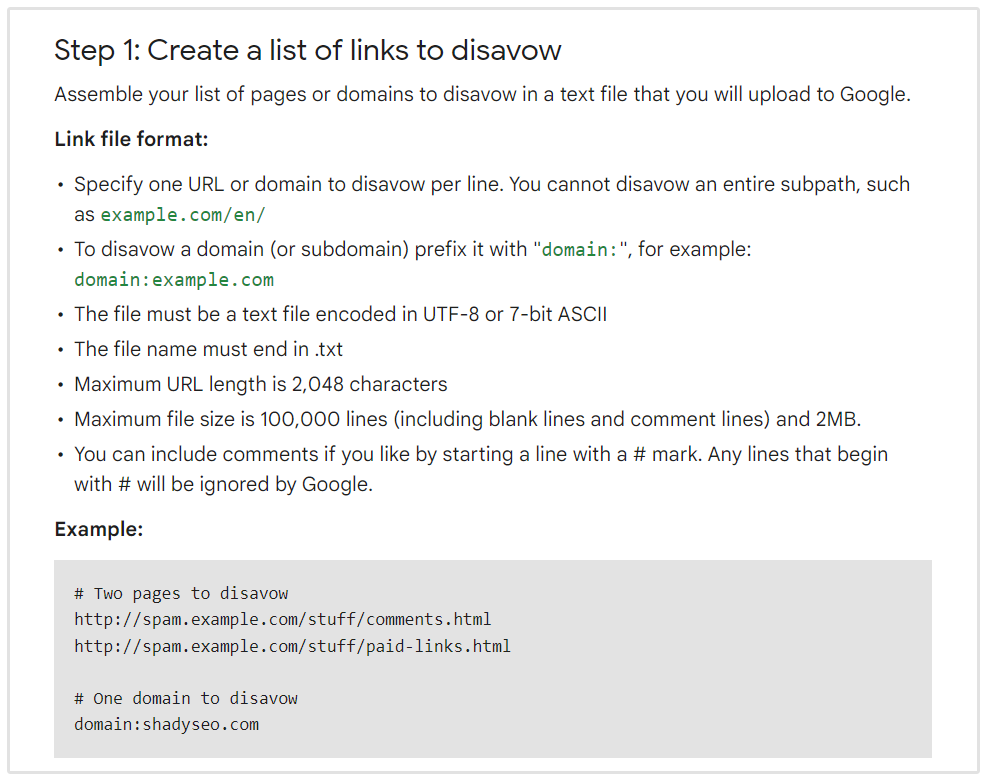
Head back to your backlink profile and export the low-quality links you found to a Google Sheets or Excel document and submit the links to Google's Disavow tool.
Google will then be told to never associate your site with theirs.
And, if that site ends up getting penalized, you won't need to worry. You no longer have a backlink tying you to them, meaning you get the all-clear!
Stay in the Loop About New, Low-Quality Links
Great job! You've cleansed your backlink profile and banished every entry that could be dragging your rankings down.
But, let's part on a final word of warning: This won't be your last attempt.
You're always building backlinks to your site, and sometimes, they're unintentional. That means this process will need to be repeated in another six months, and in another six months after that, to ensure low-quality links don't continue to drag you down.
However, SEOptimer has a handy feature that'll help you with this.
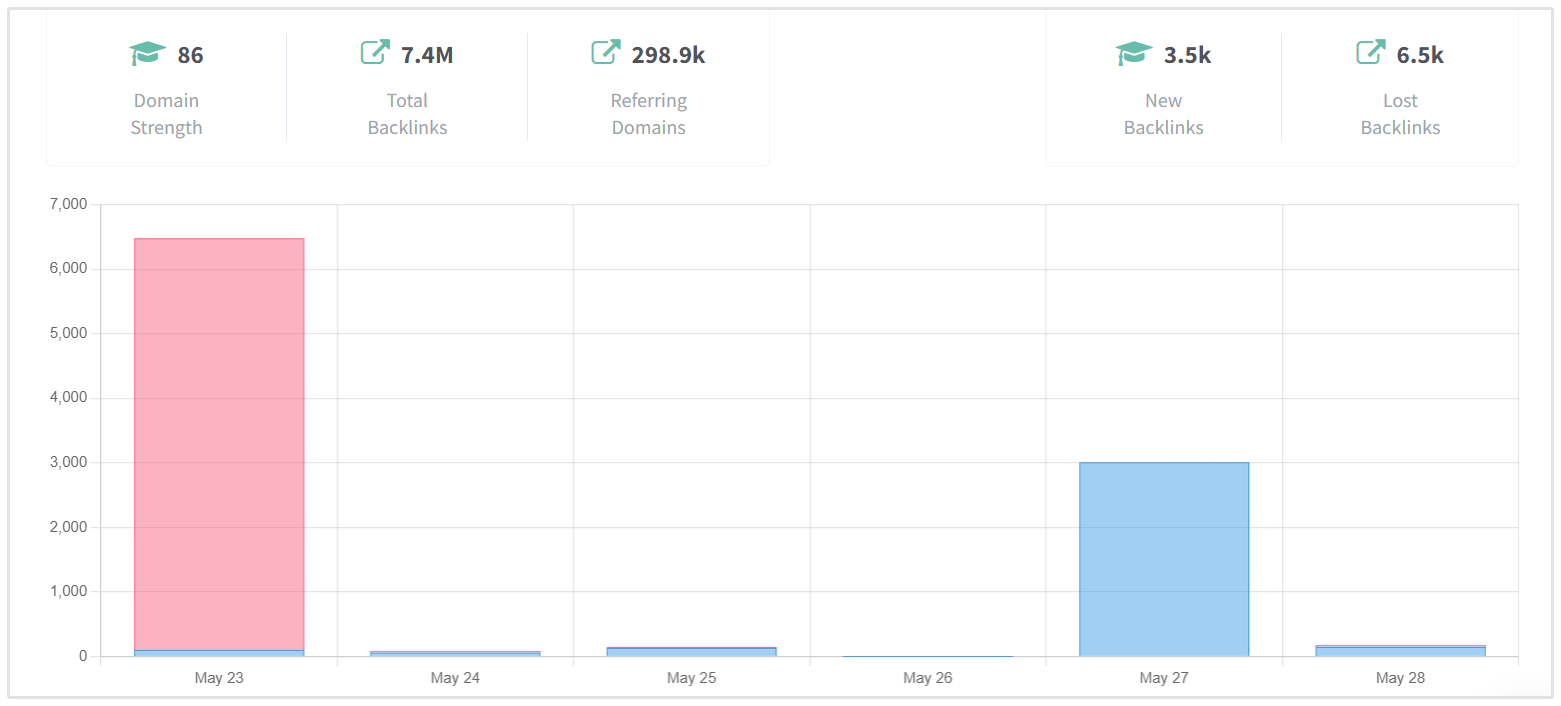
The tool constantly monitors your backlink profile so that you don't have to keep checking in, and notifies you when any new backlinks are built to your site (or when a backlink gets removed).
Whenever a suspicious-looking link appears in your weekly notification, you just have to boot up the tool to take a closer look.
That way, you can keep on top of your purging process and focus on larger-scale SEO tasks to improve your search visibility.
If I were to sum up this article in a single sentence, it'd be this:
Not every link is a good link!
Regularly check your backlink profile for any new additions, and disavow any low-quality links that could be causing damage to your site's SEO.
You'll turn into an analyzing machine... And soon hit the top spots!










